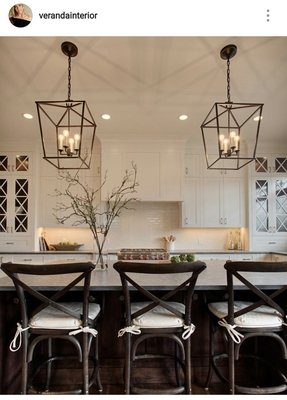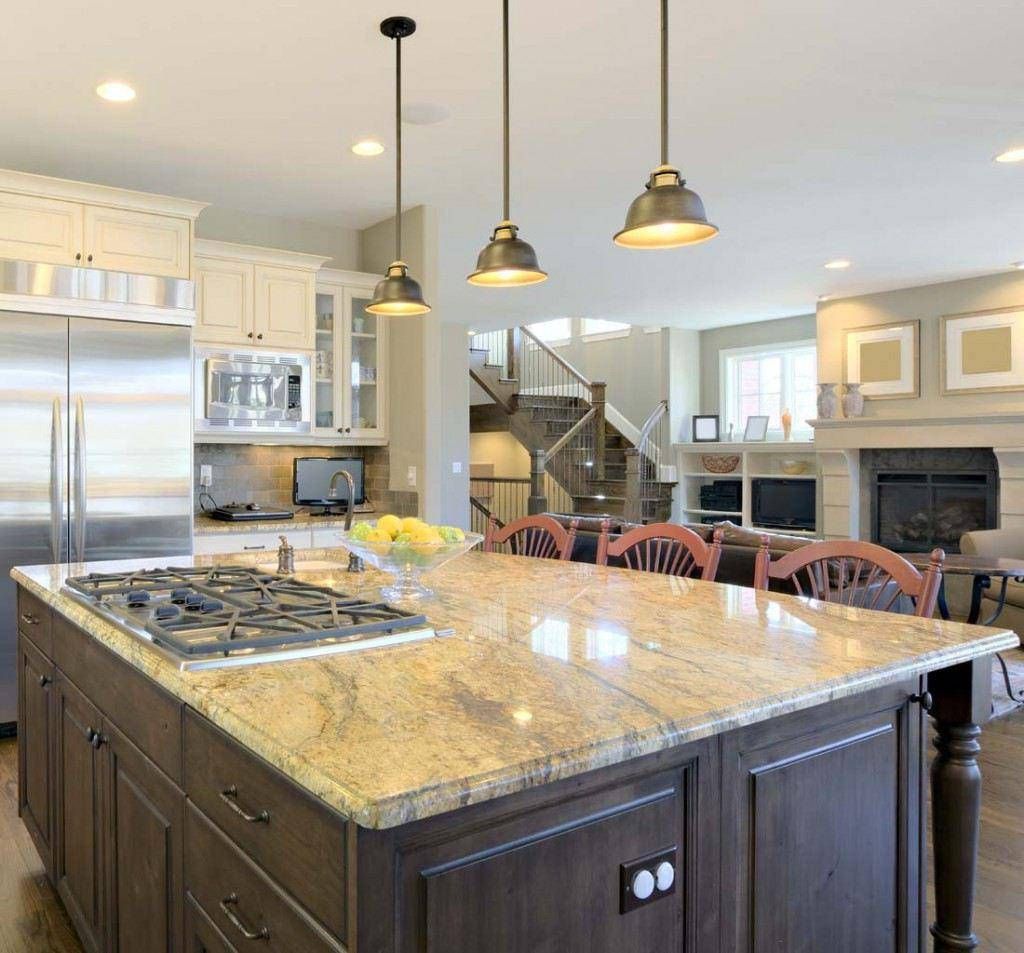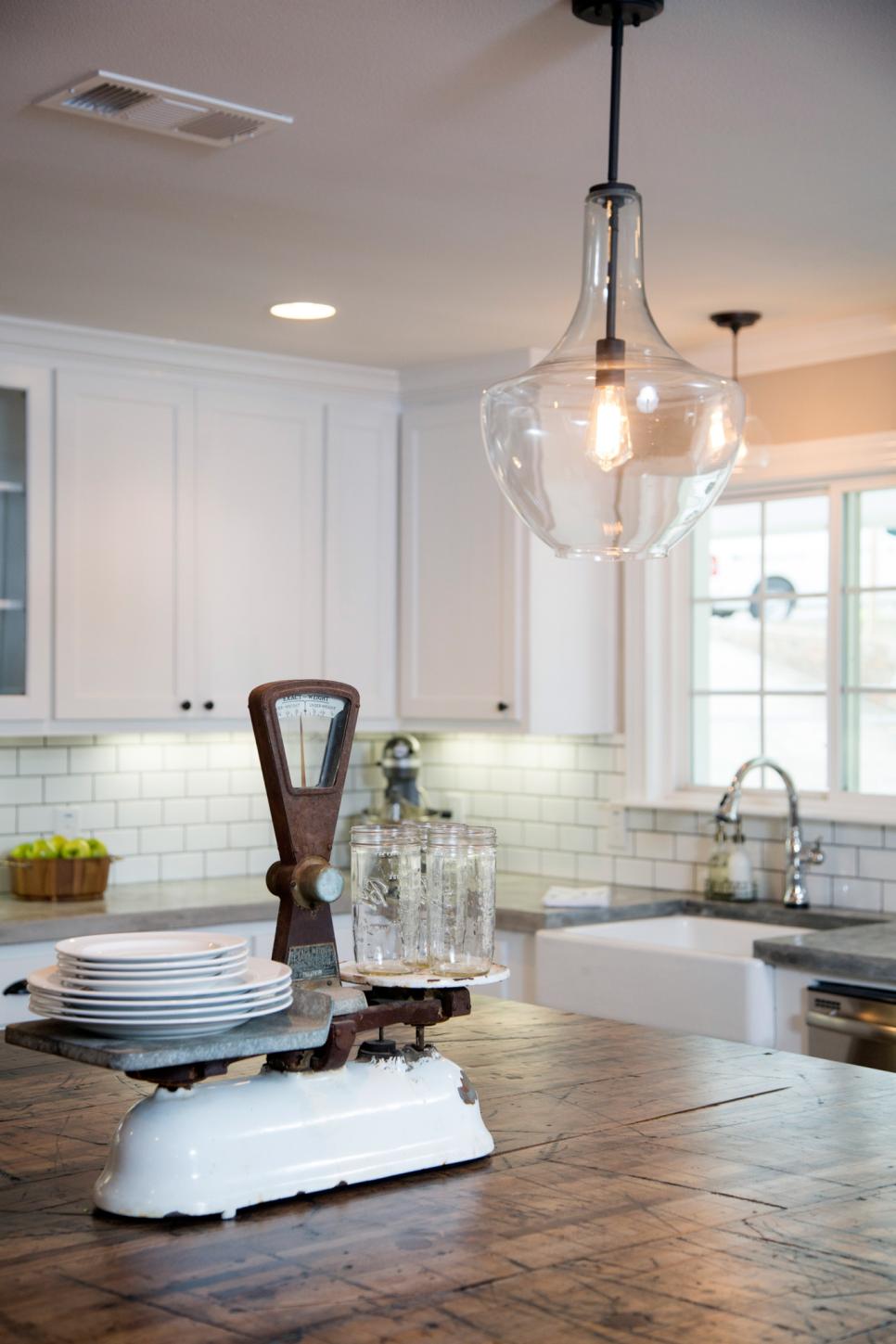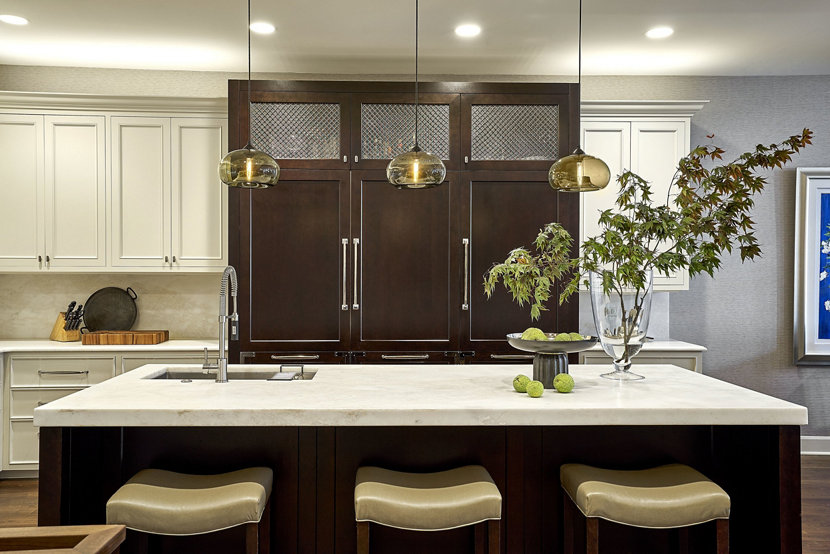Kitchen island pendant lighting is a crucial aspect of modern kitchen design. It not only enhances the aesthetics but also provides essential illumination for various kitchen activities. Today we will discuss the details of kitchen island pendant lighting, exploring its benefits, types, design considerations, installation tips, maintenance, and common mistakes to avoid.

Benefits of Kitchen Island Pendant Lighting
Enhanced Aesthetic Appeal
Kitchen island pendant lighting significantly boosts the aesthetic appeal of a kitchen. These lighting fixtures come in various styles, from sleek modern designs to vintage industrial looks, allowing homeowners to choose a style that complements their kitchen decor. By selecting the right pendant lights, you can create a focal point in your kitchen, making the island the centerpiece of the room.
Improved Task Lighting
Pendant lights over a kitchen island provide focused illumination, which is ideal for task lighting. Whether you’re chopping vegetables, reading recipes, or enjoying a meal, pendant lighting ensures you have adequate light to perform these tasks safely and efficiently. Unlike general ceiling lights, pendant lights can be positioned directly over the work area, reducing shadows and enhancing visibility.

Versatility in Design
One of the significant benefits of pendant lighting is its versatility. These lights can be adjusted in terms of height, allowing for customizable lighting solutions. Whether you prefer your lights to hang low over the island for a cozy atmosphere or higher up for a broader light spread, pendant lights offer flexibility to meet your specific needs.
Space-Saving Solution
Pendant lights are a space-saving solution for kitchen lighting. Unlike bulky chandeliers or wall-mounted fixtures, pendant lights hang from the ceiling, leaving ample space on the island and countertops. This feature is particularly beneficial in smaller kitchens where maximizing every inch of space is essential.

Types of Kitchen Island Pendant Lights
Single-Pendant Lights
Single-pendant lights are a popular choice for kitchen islands. These lights feature one fixture hanging from the ceiling, providing focused light over a specific area. Single-pendant lights are ideal for smaller kitchen islands or for creating a minimalistic look. They come in various designs and sizes, making it easy to find a style that fits your kitchen decor.
Multi-Light Pendants
Multi-light pendants consist of multiple light fixtures hanging from a single base. This type of pendant lighting is excellent for larger kitchen islands as it distributes light more evenly across the surface. Multi-light pendants can feature lights arranged in a straight line, a cluster, or even an intricate pattern, adding a touch of sophistication to your kitchen.
Linear Pendant Lights
Linear pendant lights are elongated fixtures that span the length of a kitchen island. These lights are perfect for long, narrow islands, providing consistent illumination across the entire surface. Linear pendants often feature multiple bulbs, ensuring bright and even light distribution, making them a practical and stylish choice for modern kitchens.
Drum Pendant Lights
Drum pendant lights have a cylindrical or drum-shaped shade that diffuses light evenly. These lights are suitable for both task and ambient lighting, offering a soft and warm glow. Drum pendant lights are versatile and come in various materials and finishes, from fabric shades to metallic designs, allowing you to match them with your kitchen’s overall theme.

Design Considerations for Pendant Lighting
Size and Scale
Choosing the right size and scale of pendant lights is crucial for achieving a balanced look. The size of the pendant light should be proportionate to the kitchen island and the overall kitchen space. Oversized lights can overwhelm a small kitchen, while undersized lights may not provide sufficient illumination. Measure your island and consider the ceiling height to select appropriately sized pendant lights.
Placement and Spacing
Proper placement and spacing of pendant lights are essential for optimal lighting and visual appeal. For effective task lighting, pendant lights should be centered over the kitchen island. The spacing between multiple pendants should be even to ensure uniform light distribution. A general rule of thumb is to space pendants about 24 to 30 inches apart, depending on their size and the length of the island.
Style and Finish
The style and finish of pendant lights should complement your kitchen’s decor. Consider the overall design theme of your kitchen, whether it’s modern, traditional, industrial, or transitional. Choose pendant lights that enhance this theme, focusing on materials, colors, and shapes that blend seamlessly with other elements in the kitchen. For example, stainless steel pendants work well in contemporary kitchens, while bronze or copper finishes add warmth to rustic settings.
Light Output and Bulb Type
The light output and bulb type are critical factors in selecting pendant lights. Determine the brightness you need for your kitchen island based on its use. For task lighting, brighter bulbs are necessary, whereas ambient lighting can be achieved with softer bulbs. Additionally, consider energy-efficient LED bulbs that offer long-lasting illumination and lower energy consumption. The color temperature of the bulbs should also be considered, with warmer tones creating a cozy atmosphere and cooler tones providing a more modern feel.

Installation Tips for Kitchen Island Pendant Lights
Determine the Right Height
The height at which pendant lights are hung is crucial for both functionality and aesthetics. A common guideline is to hang pendant lights 30 to 36 inches above the kitchen island surface. This height ensures that the lights provide adequate illumination without obstructing the view or causing glare. However, the exact height can vary based on personal preference and the specific design of the pendant lights.
Use a Dimming Switch
Installing a dimming switch for your pendant lights adds versatility to your kitchen lighting. A dimmer allows you to adjust the light intensity based on different activities and moods. For instance, you can have brighter light while preparing food and dimmer light during a casual meal or when entertaining guests. Dimmers also contribute to energy savings and extend the lifespan of your bulbs.
Ensure Proper Electrical Support
Before installing pendant lights, ensure that your electrical system can support the new fixtures. Pendant lights require a stable and secure electrical connection, especially if you are installing multiple or heavy fixtures. It may be necessary to consult a licensed electrician to evaluate your current wiring and make any necessary upgrades to handle the additional load safely.
Consider Professional Installation
While DIY installation can be tempting, professional installation is often the best option for pendant lights, particularly for complex setups or when dealing with electrical work. A professional electrician can ensure that the lights are installed correctly and safely, preventing potential issues such as poor wiring, improper mounting, or uneven spacing. Professional installation also provides peace of mind, knowing that your lighting system complies with local building codes.
Maintenance of Pendant Lights
Regular Cleaning
Regular cleaning is essential to maintain the appearance and functionality of your pendant lights. Dust and grease can accumulate on the fixtures, diminishing their brightness and appeal. Use a soft cloth or duster to clean the lights regularly. For stubborn grime, a mild detergent solution can be used. Be sure to turn off the power and let the bulbs cool before cleaning to avoid burns or electric shock.
Check for Wear and Tear
Over time, pendant lights can show signs of wear and tear, such as frayed wires, loose connections, or tarnished finishes. Periodically inspect your pendant lights for any damage and address issues promptly. Replacing worn-out parts or fixtures ensures that your lighting remains safe and effective. If you notice any significant damage, it is advisable to consult a professional for repairs.
Replace Bulbs as Needed
Pendant light bulbs will eventually burn out and need replacement. To maintain consistent lighting, replace bulbs as soon as they start to dim or flicker. When replacing bulbs, make sure to use the correct wattage and type recommended by the manufacturer. Switching to LED bulbs can reduce the frequency of replacements due to their longer lifespan and energy efficiency.
Update Fixtures for a Fresh Look
If your kitchen decor changes or you simply want to refresh the look of your space, updating pendant light fixtures can make a significant impact. Swapping out old pendants for new designs can modernize your kitchen without a complete renovation. Consider changing the style, finish, or size of the fixtures to align with current trends or your evolving taste.

Common Mistakes to Avoid
Incorrect Sizing
One of the most common mistakes when choosing pendant lights is selecting the wrong size. Oversized lights can dominate the space and appear overwhelming, while undersized lights may not provide adequate illumination. Always measure your kitchen island and consider the scale of your space to choose appropriately sized pendant lights.
Poor Placement and Spacing
Improper placement and spacing of pendant lights can lead to uneven lighting and an unbalanced look. Avoid placing lights too close together or too far apart. Following guidelines for spacing and height ensures that the lights distribute light evenly and enhance the kitchen’s visual appeal.
Ignoring Style Consistency
Ignoring the overall style and theme of your kitchen when selecting pendant lights can result in a disjointed design. Ensure that the style, color, and finish of the pendant lights complement the existing decor. Consistency in design elements creates a cohesive and harmonious look.
Neglecting Functional Needs
Focusing solely on aesthetics while neglecting functional needs is a common mistake. Pendant lights should provide adequate task lighting for the kitchen island. Consider the brightness, light direction, and bulb type to ensure that the lights serve their practical purpose effectively.
Skipping Professional Installation
Attempting a DIY installation without the necessary skills can lead to safety hazards and improper installation. It is advisable to seek professional help, especially for complex setups or when dealing with electrical components. Professional installation ensures that the lights are securely mounted and function correctly.

How many pendant lights should I install over my kitchen island?
The number of pendant lights you should install depends on the size of your kitchen island and the size of the pendant lights. A common rule of thumb is to use two to three pendants for a standard-sized island (6-7 feet long). For larger islands, consider using three or more pendants to ensure even lighting. It’s important to space them evenly and ensure they provide adequate coverage for the entire island surface.
What is the ideal height to hang pendant lights over a kitchen island?
The ideal height for hanging pendant lights over a kitchen island is typically 30 to 36 inches above the island surface. This height provides sufficient illumination without obstructing views or causing glare. However, the exact height can vary based on personal preference, the height of the ceiling, and the design of the pendant lights. It’s essential to ensure that the lights are at a comfortable level for both functionality and aesthetics.
Can I mix different styles of pendant lights in my kitchen?
Yes, mixing different styles of pendant lights can create an eclectic and unique look in your kitchen. However, it is essential to maintain a sense of harmony and cohesion. Consider combining lights that have complementary shapes, colors, or materials. The key is to balance variety with consistency to avoid a chaotic appearance. Mixing styles work best in kitchens with a neutral base, allowing the pendant lights to stand out as design features.
Are LED bulbs suitable for pendant lights?
LED bulbs are an excellent choice for pendant lights. They are energy-efficient, have a longer lifespan, and are available in various color temperatures to suit different lighting needs. LED bulbs also produce less heat compared to traditional incandescent bulbs, making them safer and more cost-effective in the long run. When choosing LED bulbs for pendant lights, ensure they are compatible with the fixtures and provide the desired brightness and color temperature.
How do I choose the right style of pendant light for my kitchen?
Choosing the right style of pendant light for your kitchen involves considering your kitchen’s overall design theme, color scheme, and personal preferences. For a modern kitchen, sleek and minimalist designs in metallic finishes work well. In a traditional kitchen, consider pendant lights with ornate details and warm finishes like bronze or brass. For industrial or rustic kitchens, look for fixtures with exposed bulbs and raw materials like wood or metal. It’s important to select pendant lights that enhance the kitchen’s decor while providing the necessary functionality.

Kitchen Island Pendant Lighting – Hanging pendants

Kitchen Island and Vintage Scale

Kitchen Island Pendant Lights

Kitchen Island Lighting Elegant Light By Luxall Crystal

Related Posts:
